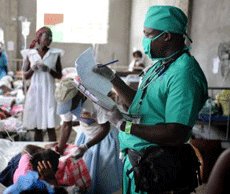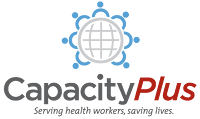Subject Guide: Policy Advocacy

Health workers at all levels rely on policymakers to define how the health services will be regulated, managed and funded. 1 Policy determines the degree of support that human resources for health receive at local, national, or international level, and therefore are a key element in the ability to provide essential health services. Health workforce policy is the actions of governments, at all levels, which have the intent or effect of altering the characteristics of the health workforce. This may include the number, type, distribution, skills, resources, work environment, compensation, authority to provide services, duties under law, rights, and protections of the health workforce. Health workforce policy advocacy is a form of persuasion – an effort to change the current status of government action (or inaction) that the advocate regards as unsatisfactory by persuading those in authority to make new or different choices.
To effect lasting and effective change to the current crisis in human resources for health, it is necessary for organizations, health workers and other health stakeholders to advocate for policies that protect, support and promote health workers at levels that will ensure a safe, effective health workforce capable of providing access to basic health services for the population. Policy advocacy is directed at changing the policies, positions or programs of any type of institution. It is about identifying a problem, identifying a solution to that problem, and then building the support you need to see your solution implemented. 2 Policy advocacy has many dimensions: framing the issue or problem; creating urgency among policy makers; proposing policy alternatives or solutions; making moral arguments; recruiting leaders, champions and spokespeople; developing compelling communications; building coalitions; and mobilizing resources.
Policy Advocacy in Fragile Environments
A growing issue of concern for policy advocates is the needs of health workers in fragile environments, areas impacted by conflict and natural disasters. Violence against health workers in conflict affected regions and the additional health risks for health workers when responding to emergencies in natural disaster affected regions requires attention from policymakers. Delivery of health care may be severely compromised when health workers are exposed to violence, threatened, kidnapped, injured or killed. As an identifiable component of the relief effort, policy advocacy for international and local support is needed to assure their protection and safety, and to assist them to maintain their important role in the delivery of essential services. 3
Addressing the Issue
Policy topics covered in the HRH Global Resource Center include: advocacy, national policy, and organizational policy. There are also resources that address health workforce issues in fragile environments, including conflict affected regions and natural disaster affected regions as well as materials on workplace violence for health workers.
Recommended reading:
The HRH Global Resource Center also publishes original HRH Policy Advocacy Leaders in Action Interviews with people working at the frontlines of policy advocacy conducted by Frances McVay:
- HRH Policy Advocacy Leaders in Action Interview: Andrew Barrer
- HRH Policy Advocacy Leaders in Action Interview: Betsy McCallon
- HRH Policy Advocacy Leaders in Action Interview: Crystal Lander
- HRH Policy Advocacy Leaders in Action Interview: Jeff Meer
- HRH Policy Advocacy Leaders in Action Interview: Donna Barry
- HRH Policy Advocacy Leaders in Action Interview: Lisa Bos
- HRH Policy Advocacy Leaders in Action Interview: Sandra Krause
- HRH Policy Advocacy Leaders in Action Interview: Marshall Stowell
- HRH Policy Advocacy Leaders in Action Interview: Mary Beth Powers
[1] Dussault G. Improving the Performance of the Health Workforce: from Advocacy to Action. Pan American Health Organization. Accessed on March 8, 2012.
[2] Daoust P et al. Addressing the Health Workforce Crisis: a Toolkit for Health Professional Advocates. Health Workforce Advocacy Initiative. Accessed on March 8, 2012.
[3] Zwi A and L Thompson. Top 12 Issues for Ministries of Health to Consider in Addressing HRH in Public Health Emergencies (PHEs). Human Resources for Health Knowledge Hub. Accessed on March 8, 2012.
- 3150 reads




